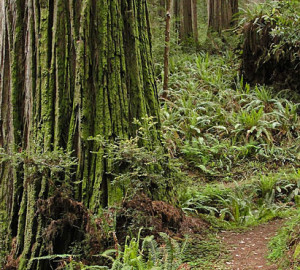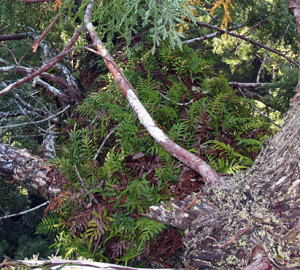Black Salamanders Show Biodiversity of Redwood Forest
onThe range of the black salamander (Aneides flavipunctatus) almost perfectly overlaps with the historic range of redwoods along the Central and Northern California coast. While most animals live on the Earth’s surface, this well-hidden amphibian travels mostly up and down in the rocks and soil. Its vertical approach to life comes in handy when the weather is hot or dry: the salamander moves deeper into the Earth until conditions are more to its liking. Learn more about this research.






